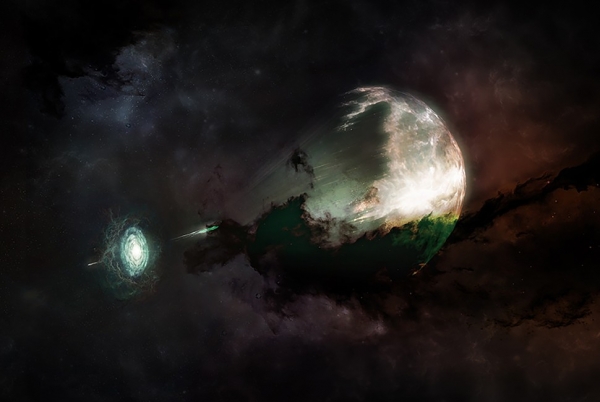For the first time, scientists have recorded millimeter-wavelength light from a fiery explosion caused by the merger of a neutron star with another star.
Led by Northwestern University and Radboud University in the Netherlands, the team also confirmed this flash as one of the most energetic short-duration gamma-ray bursts (GRBs) ever observed, leaving behind one of the most luminous afterglows on record.
Astrophysicists made the discovery with the Atacama Large Millimeter/submillimeter Array (ALMA), an international observatory operated by the National Science Foundation’s National Radio Astronomy Observatory (NRAO). Located in the high-altitude Atacama Desert in Chile, the ALMA array comprises 66 radio telescopes, making it the largest radio telescope in the world.
Read more at Northwestern University
Image: This artist's conception shows the merger between a neutron star and another star (seen as a disk, lower left) which caused an explosion resulting in the short-duration gamma-ray burst, GRB 211106A (white jet, middle), and left behind what scientists now know to be one of the most luminous afterglows on record (semi-spherical shock wave mid-right). Credit: ALMA (ESO/NAOJ/NRAO), M. Weiss (NRAO/AUI/NSF)


